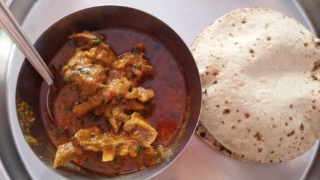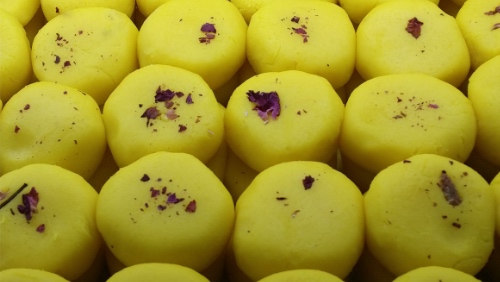
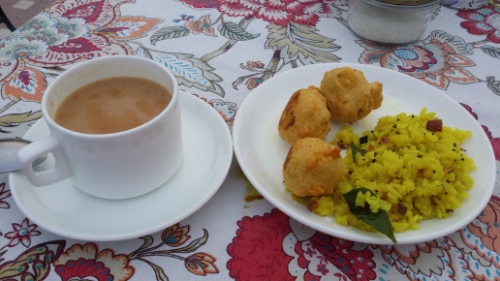
Indian Cuisine & the Culinary Magic of Rajasthan (Part 1)
Key points
- Indian cuisine involves many styles and methods of cooking.
- Rajasthan cuisine is heavily influenced by the traditional availability of game meats. These are typically complemented with local dishes such as chutneys and pickles.
- Rajasthan also has a great variety of vegetarian dishes. Visitors to Ikaki Bagh can enjoy local dishes using organic produce.
- In the first of two blogs, we write about the traditions of Indian cuisine. We also talk about Rajasthan’s distinctive cuisine and culinary tradition.
Indian cuisine
India is vast. Cuisines differ deeply due to factors such as soil type, climate, culture, ethnic groups, occupations and religious influences.
Each region of India has its own style of cooking and distinct flavours. Available herbs, spices, vegetables, grains and fruits play an influential role.
The North is well recognised for its tandoori and korma dishes. The South is more noted for hot and spicy foods. The East specialises in curries flavoured with chilis. The West is famous for its seafood and use of coconut.
Vegetarianism is widespread throughout India consistent with the widespread practice of Hinduism.
Communities of Muslims, Jains and Sikhs each have their own cuisines. These are deeply rooted in their religious beliefs, practices and cultural traditions.
The British Colonial era left a distinctive mark on Indian cuisine. This included eating habits such using a table and chairs to eat at which became popular among wealthier Indians.
Soups and salads became popular under British rule. Curries were often sweetened or watered down to reduce spiciness. Notably, the British also promoted eating rice with curries, now common practice today.
Selective blending of Indian spices into to British favoured dishes became common. The most famous being kedgeree. Originally, kedgeree was an Indian rice and lentil dish. British adapted the dish adding eggs, fish and introducing dried fruits, especially sultanas.
These adapted forms of Kedgeree became popular in Victorian times in the United Kingdom.
Local sweets and desserts were already popular across India and remain so today. The British introduced sponge cakes, tartlets, custards and puddings which also remain popular to this day.
Biscuits were widely imported from the United Kingdom. Recipes for biscuits were then adapted using local spices such as ginger, cloves, cinnamon and cardamom.
The British also influenced some curries being sweetened or having the spiciness pulled back. Most notably, the British also influenced eating rice with curries, common practice today.
Rice is a major staple in the South where it is eaten in many forms such as thin crepes called dosai or steamed to form idli.
Portugal also established important colonial settlements from the 16th century. This led to a variety of imports common in India today such as potato, tomato, kidney beans and tobacco.
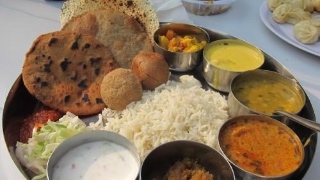
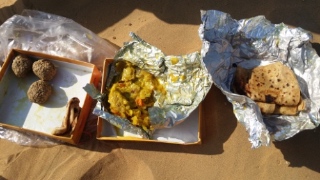
Rajasthan Cuisine
Rajasthan’s traditional cuisine is complex. It is rooted in traditional warrior traditions and a love and dependency on hunting.
The traditional cuisine was heavily meat based. Game such as pheasants, partridges, goose and migratory birds were hunted in season.
Partridges and pheasants walk up hills and fly down making for juicy, tasty breast meat. Birds hunted at the end of their migration provided strong meaty legs and breast meat.
Deer, wild boar, pigs, rabbit, chicken were widely available. Goats, well-suited to the arid landscape were bred for their meat and milk.
Scarcity of water and fresh greens had an impact on traditional cooking techniques as well as recipes.
Rajasthan cuisine has also been influenced by trade, conquest and inter-marriage. Trade flourished across a sweeping arc stretching from Gujarat to the South-West to Nepal in the East.
A range of dishes popular today trace their origins to royal traditions. Purists argue today’s versions have little resemblance to the traditional dishes. Factors cited include changes in cooking techniques, availability of fresh ingredients and changes in consumer preferences.
Traditional dishes, still popular today in adapted form include:
- Laal Maas (Mutton Curry)
- Govind Gatta (dumplings made from gram flour, stuffed with paneer in a spicy curry sauce)
- Doodh ke Samose (samosa)
- Kaleji ka Raita (chopped, smoked goats liver mixed with a thick curd, cumin and salt)
- Khad Khargosh (curried rabbit) and
- Khargosh ki Mokal (dry rabbit curry).
Rajasthan is also famous for its vegetarian cuisine. Nearly 75% of Rajasthani people today are vegetarian, the largest percentage of any State in India.
Rajasthan has developed to be one of India’s largest agricultural production states. It produces a wide variety of fruit and vegetables that supplement traditional ingredients.
Hari Mirch ka Potha is an especially renowned traditional vegetarian dish. This dish uses big green chilis, farmed with the root. The chilis are then slit along the length and stuffed with masalas. In the most traditional form of the dish, the roots are wrapped in cloth, allowing them to stay green even after deep frying.
Dal Baati is another a famous Rajasthani dish comprising dal (lentils) and baati (hard wheat rolls). Millet, wheat, corn and lentils are mainstays of Rajasthan cooking.
Local conditions and available ingredients have been influential in the popularity of accompaniments to complement other dishes.
Rajasthan has a wide variety of chutneys, relishes and pickles which are distinctive to Rajput cultural heritage.
Popular chutneys are made of turmeric, garlic, mint, coriander, lemon, green chili, red chili, tomatoes and indigenous fruits.
In our next blog, we will write about:
- the role chutneys and relishes play in Rajasthan cuisine
- and the opportunity to enjoy home cooked, traditional dishes at Ikaki Niwas and Ikaki Bagh, and
- a special recipe for a local favourite chutney.
